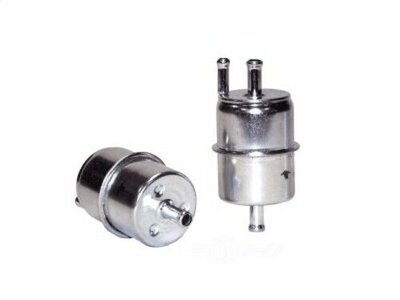Sonny
It’s all fun til the rabbit gets the gun.
So is iron better for hood temps or worse? Everything I’ve read says steel headers are bad for hood temps- Stock Manifolds are cooler.Yeah the iron dissipates heat much slower.
So is iron better for hood temps or worse? Everything I’ve read says steel headers are bad for hood temps- Stock Manifolds are cooler.Yeah the iron dissipates heat much slower.
Thanks that’s what I was after. Cruising down the road I’m at 180 all day (steel headers or manifolds). My problem is at idle in traffic. So going to manifolds should improve that issue for me.In my opinion, it depends. You have to pick a point in time to answer that question. If you are talking about while you are running, then the airflow will take away the heat from the steel headers, but once you stop, the steel headers will heat up the engine compartment much faster than the stock cast manifolds because they dissipate the heat much quicker. If it heats up quicker, it gives the heat off quicker. You have much more mass with the stock manifolds and therefore they store much more heat energy and dissipate it at a much slower rate (cool off), so after a period of time, they become the governing factor in the temperature rise or maintenance of temperature area under the hood. They will actually cool off quicker than the engine, which has a greater mass, and will be the controlling factor of temperature under the hood. The engine will dissipate some of its heat by conduction, into the manifold. I hope this helps and I hope I explained what I believe happens, properly.
What in the world, causes gasoline to bubble or boil in the tank?! Running Non-Ethanol, with a bit of "Race Gas" 105 octane.. 440 Six Pack car. Drove a bit yesterday, 70°, engine temp SHOULD be 190°-195° for a6 pack I know, however, I'm temporarily running a 180° thermostat. Had gas pouring out of the fuel lines near the tank. Just had new sending unit installed. Did notice 2of the short rubber "Go Nowhere lines" were loose. Could have been the problem. But its INTERMITTENT. Only pours gas out when driving. And stops when I park to check it?
Weird! Mechanical pump, all new lines.. No return line.
All good ideas. Another suggestion, there is a lot of heat Fountain off the blacktop in Florida. Insulating the gas tank itself from the bottom would be a good idea too.It’s 80 degrees now here in Florida and with it came fuel boiling issues for my new 440. Engine temp never exceeded 200, but at traffic lights my air fuel ratio slowly dropped to rich readings and with it came poor idle. After sitting 15 min and engine off, carb bowls are empty.
I did this last year with my 360 with alum intake. Added wood spacer, blocked off exhaust risers, insulated lines, etc. but still had issues over 90 degress. I would prefer to actually fix it this time.
I’d like to get some details from folks who have gone to an electric pump. I currently have a single 5/16” line, no return, from my sender to my 440. I bought a new sender with 3/8” supply and 1/4” return to install.
This is a road trip/car show car so not worried about having a massive racing pump. I need a pump with about 15psi or so and can lift fuel out of the top of my stock tank (external pump). I’ll need to add a regulator too. So a few questions:
-pump recommendations?
-where did you mount the regulator?
-did you use a relay for power to the pump?
-did you run steel lines or other?

Did you also regulate the pressure before the carb? Glad this fixed your issueLike you, I had shocking fuel boiling issues. I tried carb insulators/spacers and insulating the fuel lines all to no avail. I also was sick of dry fuel bowls and hammering my poor starter.
I installed a Carter electric pump just in front of fuel tank and installed a Wix 33040 (or 33041, not sure) and ran a 1/4" return line through a bulkhead fitting I added to fuel sender. Now car starts instantly as elec pump fills my bowls before I crank and fuel has never boiled even in 100 deg + weather.
Note - the return nipple on filter must be positioned to be at the highest point to work effectively. -
View attachment 1087943
All good ideas. Another suggestion, there is a lot of heat Fountain off the blacktop in Florida. Insulating the gas tank itself from the bottom would be a good idea too.
No I didn't need a regulator as I used a Carter P4070 rated at 4-6psi.Did you also regulate the pressure before the carb? Glad this fixed your issue
